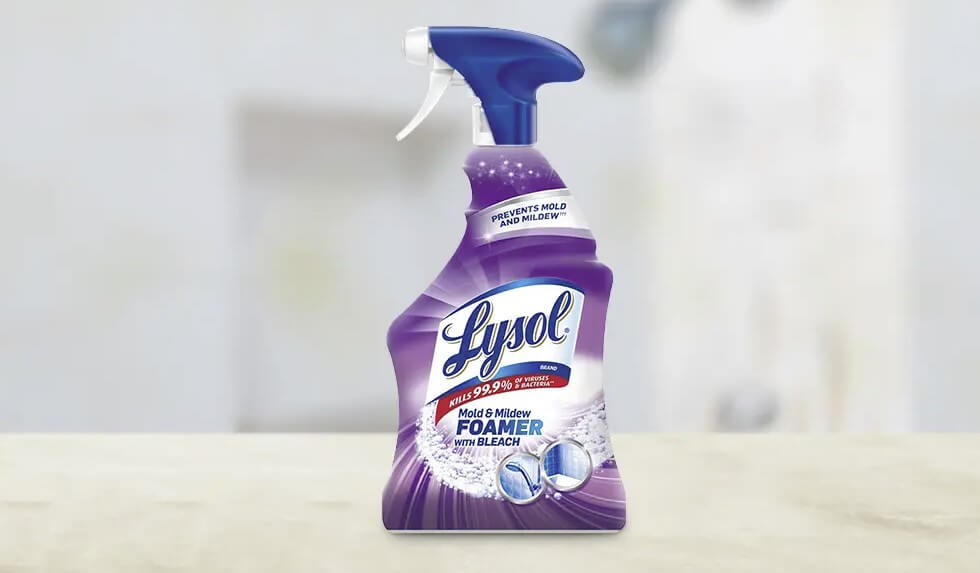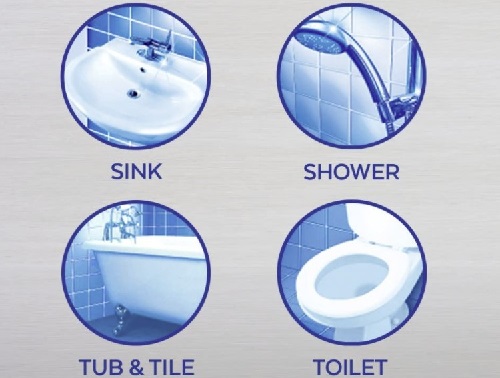Homeowners use different methods to kill mold. Many use natural substances like baking powder and vinegar, and others use hydrogen peroxide-based mold killers and bleach. But for many years, people have relied on Lysol as a disinfectant and sanitizer to clean and whiten surfaces. Lysol is also marketed to kill viruses like influenza A. But does Lysol kill mold?
Lysol, the company behind this product, has many products you can buy online and locally. For homeowners who want to get rid of mold, the Lysol Mold and Mildew Remover is the best option.

Lysol Mold and Mildew Remover destroys mold and mildew and kills 99.9% of bacteria and viruses. It is also effective when cleaning surfaces to give them a brilliant shine. You can use Lysol to kill mold in a car because of the ingredients used to make the disinfectant.
How Lysol removes mold
Lysol can destroy stubborn mold and mildew stains in your home because it has sodium hypochlorite as its active ingredient. Household sodium hypochlorite or bleach can kill mold on non-porous materials. But Lysol also has other ingredients that make it more effective. These include sodium chloride, sodium hydroxide, and lauramine oxide.
Lauramine oxide works in the disinfectant as a versatile and highly efficient surfactant. Sodium hydroxide is a caustic substance that can kill mold. Noteworthy, sodium chloride can kill mold even if the environment around the fungus is wet.
In general, Lysol is the best product to kill mold. When you apply it to a moldy surface, its different ingredients will use their unique qualities to kill the mold.
Lauramine oxide will work as a surfactant to break down the surface tension and cause the mold spores to move from the surface. Sodium hydroxide will burn or destroy the organic tissue of the mold through chemical action.
Since the liquids will moisten the affected area, sodium chloride will kill the mold. Sodium hypochlorite will also eliminate the mold and whiten the area.
How to use Lysol to kill mold
It is easy to use Lysol at home to remove mold and mildew from surfaces. Here are the directions:
- Pre-clean the affected area using warm water.
- Apply Lysol Mold and Mildew Remover on the surface.
- Leave the area wet for about five minutes to air dry.
- Wipe the surface.
- Repeat the procedure weekly or as needed.
Understand that Lysol will work well on non-porous materials. Although porous surfaces do not transmit pathogens as easily, they are challenging to disinfect using products made up of bleach.

Will Lysol kill mold in an air conditioner?
Air conditioners tend to sit for several months without proper maintenance. Some of them can be breeding grounds for mold and mildew because of the degradation and moisture caused. To avoid the piling up of fungus, you can use Lysol to kill mold in your air conditioner.
Here are the directions of use:
- Vacuum the outside fins or blower compartment of your air conditioner to remove any dirt or debris blocking the airflow.
- Remove the fan from the air purifier.
- Clean the inside fins with your preferred Lysol cleaner.
Lysol will help to disinfect the air conditioner. It will also remove any mold or mildew that has piled up in the unit. As a result, it will allow for a fresher smell and improved air quality in your home. Note that, you can also use vinegar to get rid of mold from a humidifier.
Lysol vs. vinegar for mold
Both Lysol and vinegar will kill mold. However, vinegar will work better on removing the fungus from porous materials.
Lysol will only kill mold spores on surfaces of affected materials. Vinegar, on the other hand, will penetrate porous materials and eliminate the mold at the roots. That means the chances of the fungus returning are close to zero. When you use Lysol, the mold may return.
If you want to kill mold using vinegar, the best way is to spray it on the moldy surface. Leave the treatment for about ten minutes to act on the fungus. Once done, wipe down the area using a clean cloth soaked in warm water.
Conclusion
People have been using Lysol for many years as a disinfectant and cleaner. Lysol also works well as a mold and mildew remover. It contains different ingredients that will kill mold and remove it from surfaces. You can also use the product to kill up to 99.9% of viruses and bacteria.